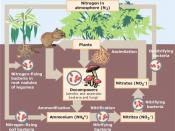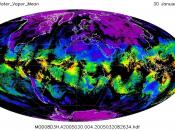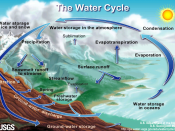Life on earth maintains its balance by the existence of four biogeochemical cycles, namely, the water cycle, the carbon cycle, the nitrogen cycle and the phosphorus cycle. These cycles are formed on the basis of various organic and inorganic nutrients which circulate through the cycle in different forms along these cycles. These cycles are essential because they prevent the nutrients from being depleted entirely and without these chemicals "life on earth would not be possible" (Phillips and Hilgendorf).
The Water cycle: -
Water one of the most essential compounds due to which there is life on earth, makes up a major part of the earth and the human body, the reservoirs of water need to be recycled regularly to prevent them from drying up completely so that life does not cease to exist on earth.
Water on earth is maintained by the water cycle, the water circulates between the various ecosystems which are the lithosphere, biosphere, hydrosphere and atmosphere.
It does so by changing it form from solid to liquid, liquid to gas and vice versa.
The diagram above (The hydrologic cycle) explains the processes that take place in the water cycle and how water circulates between the different ecosystems.
The different processed that take place in the water cycle are evaporation, condensation, precipitation, deposition, runoff, infiltration, sublimation, transpiration, melting, and groundwater flow.
Evaporation: - It is the process by which water changes from the liquid state due to heat which causes the water to change into water vapor and go into the atmosphere.
Transpiration: - Like evaporation, in this process water also changes to its vapor but here the water is from the stomata of leaves of plants and shrubs.
Condensation: - In this process water from the atmosphere changes from vapor to liquid because of the cooling...


